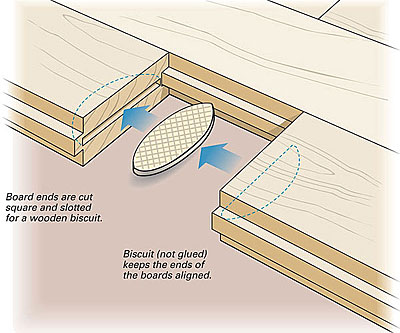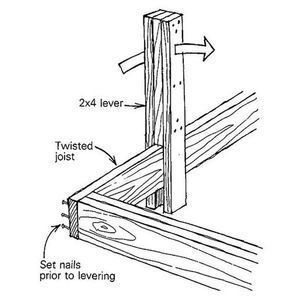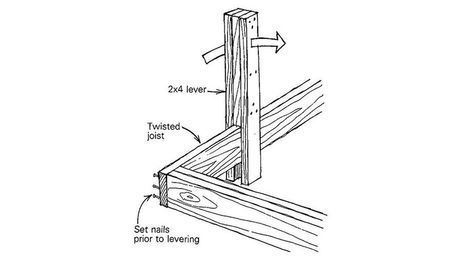Q:
My neighbors recently had their wood floors removed. Their flooring contractor cut the 30-year-old 1-in. thick select red oak into 3-ft. to 5-ft. lengths and ripped it out. I scavenged this used flooring (late at night because I was too embarrassed to ask), and I’ve pulled out the nails and discarded the split pieces or those with broken tongues. Do I have to recut the end tongues and grooves in each piece, or can I just rely on the lengthwise tongue and groove to hold the wood in place?
Scott Fetter, Fort Worth, TX
A:
Roe A. Osborn replies: Those tongues and grooves on the ends of the flooring (called end-matching) function to keep the boards aligned and indexed to the adjacent boards in the course. I’ve done small patches in hardwood flooring and have left the tongues off to make it easier to insert the patch. But doing a whole floor without end-matching the boards might present a problem.
The problem is that the boards expand and contract at different rates both in their width and in their thickness. Without end-matching, the changes in thickness could result in height differences of up to 1/16 in. in boards that are end to end. The exposed end grain from the differences in height is vulnerable to chipping from shoe shufflers such as me and from kids sliding across the floor in stocking feet.
With end-matched boards, the height differences are greatly reduced. Changes in the wood only above the tongue (or about one-third of the total thickness) will cause a difference in height between the boards.
Milling each board with a tongue on one end and a groove on the other might be quite a feat if you aren’t equipped with a shaper or a heavy-duty router table. But after squaring the ends of the boards, I’d use a biscuit joiner to put a slot in the end of each board instead (see drawing). It would be fairly simple to set up a jig to hold either the boards or the biscuit joiner to make cutting the slots safe and quick
Then you’d just slip a biscuit into the end groove as you assembled each board. You could go to the trouble of gluing each biscuit, but I don’t think it’s necessary because you’re just asking the biscuit to align the pieces rather than to hold the pieces together. I’d use #10 biscuits that are about 2 in. across for standard 2-1/4 in. wide flooring.


























